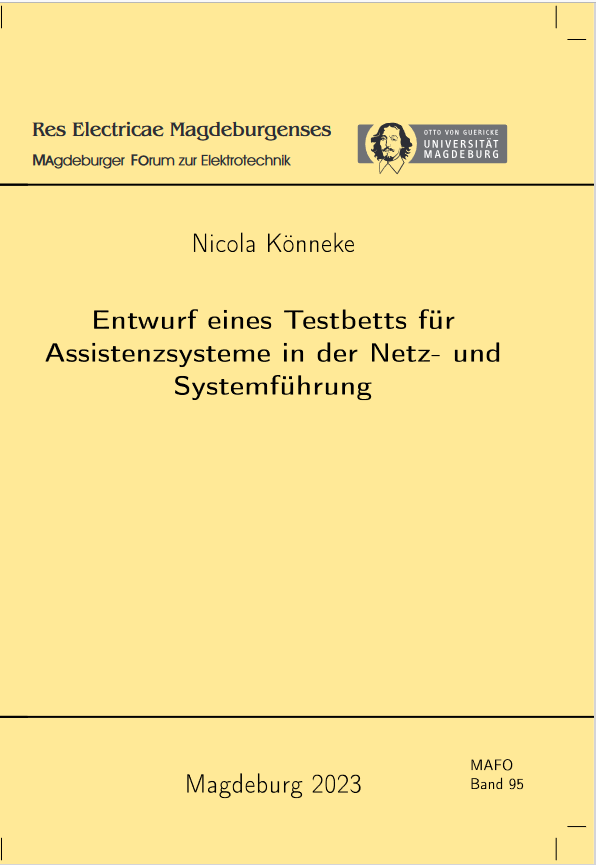Entwurf eines Testbetts für Assistenzsysteme in der Netz- und Systemführung
DOI:
https://doi.org/10.24352/UB.OVGU-2023-015Keywords:
Elektrische Netzwerke und Schaltungen, Assistenzsysteme, NetzführungskonzeptAbstract
On June 30, 2011, the Bundestag decided to completely phase out nuclear energy [1]. Furthermore, a complete exit from coal power was confirmed on June 3rd, 2020 [2]. These decisions led to a significant decline in conventional generators and thus to a significant reduction in the inertial flywheel masses in the grid. In addition, the share of renewable energy sources in gross electricity generation has increased in recent years from 18.9 TWh (1990) to 233.6 TWh (2021) [3]. At the same time, the highly dynamic power electronics in the network increased significantly. As a result of this transformation, the dynamics in the individual supply networks are noticeably increasing. In the future, it can no longer be accomplished with established network management concepts that have to be carried out completely manually. Accordingly, some network management processes must be partially or fully automated. Such an automation of the network management is considered in the present work. For this purpose, the basis of the developed test bed, the standard-compliant interface, is presented first. This includes an evaluation of the conditions contained in IEC-60870-5 regarding the communication structure and process as well as the composition of the respective telegrams. In addition, both technical and legal requirements of assistance systems are examined. The composition of the test bed is described in detail. The different functions of the communication partners (control room, interface and simulation environment) are illustrated. The connection setup, data exchange and setup of the assistance system used later are also part of this work step. The mathematical derivation of the calculations implemented in the simulation environment (load flow and sensitivity analysis) and the differences in content between redispatch and redispatch 2.0 conclude the analytical part of this work. The assistance system is then first outlined mathematically in order to be illustrated later using two different case studies. These case studies include a grid with 6 nodes from the 110 kV level and a complex network, which contains a replica of the transmission network of Saxony-Anhalt including neighboring stations and subordinate stations. Using these networks, both the functionality and the advantages of the assistance system are presented and documented. The associated simulations are based on measured values based on every quarter of an hour and cover a full year. In addition, several combinations are considered with regard to the feed-in behavior in the 6-node network.
Downloads
Published
Issue
Section
License
Copyright (c) 2023 Res Electricae Magdeburgenses. Magdeburger Forum zur Elektrotechnik

This work is licensed under a Creative Commons Attribution-ShareAlike 4.0 International License.

